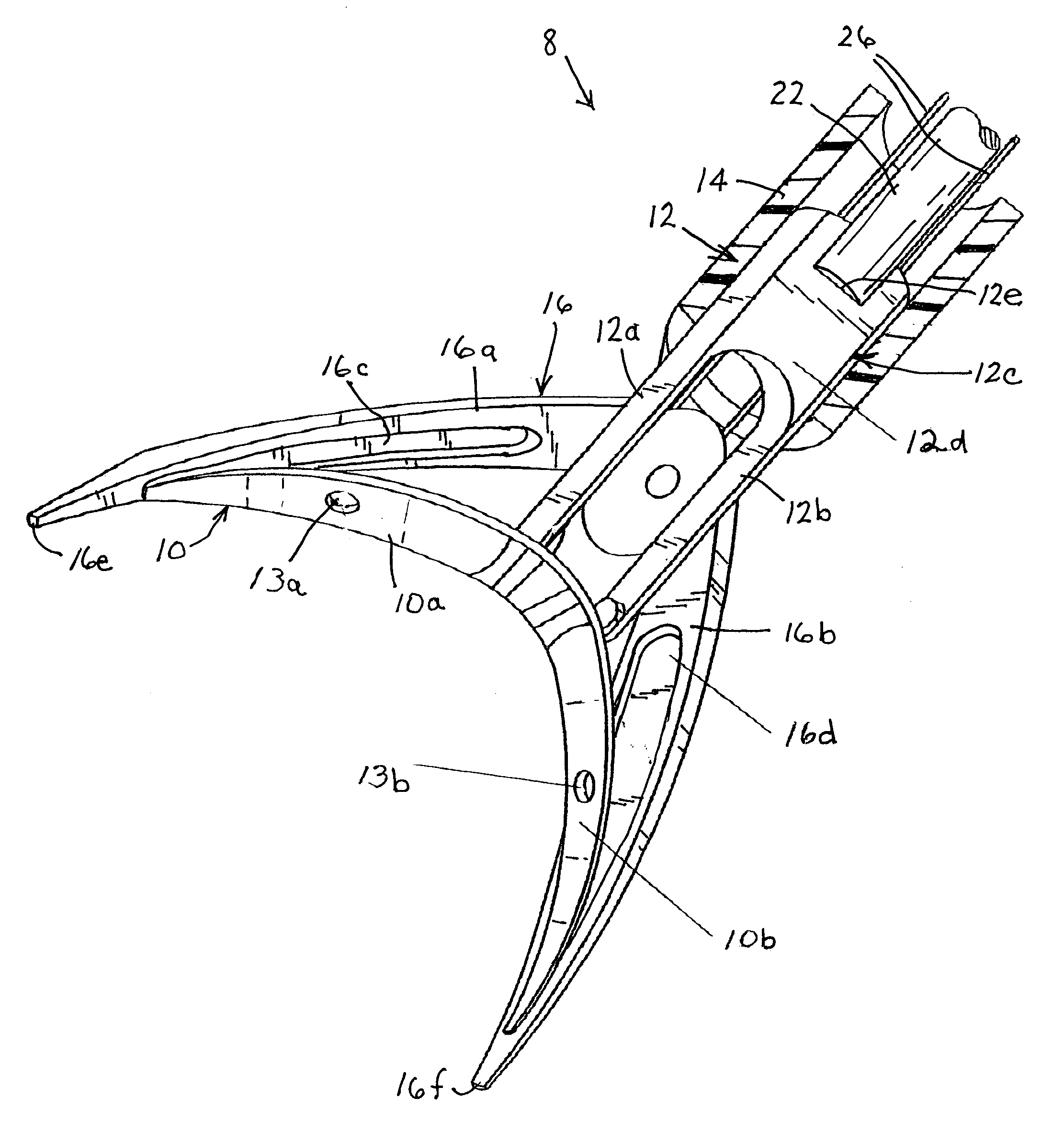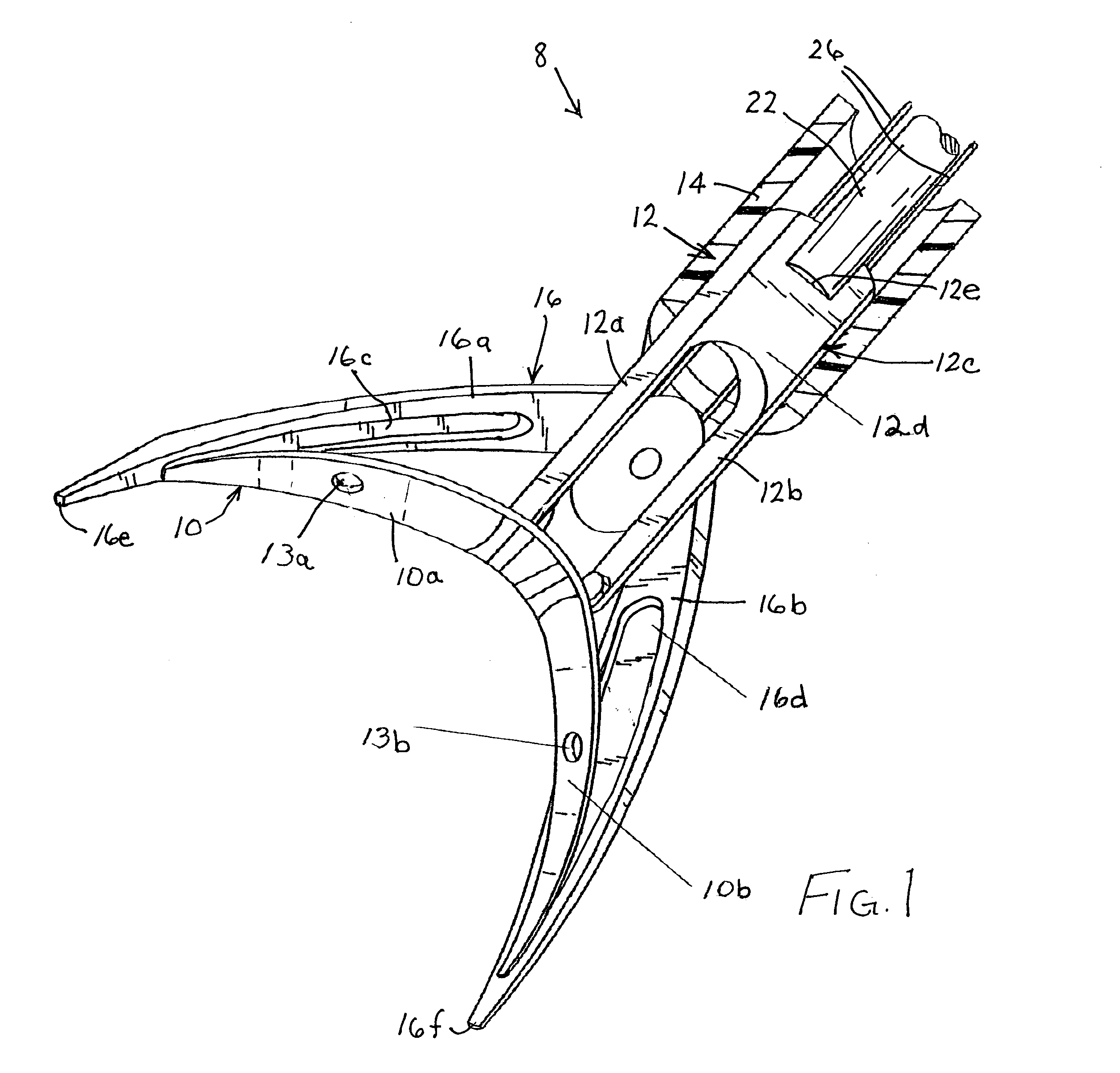Deep endoscopic staple and stapler
a stapler and endoscope technology, applied in the field of endoscopy, can solve the problems of complex and invasive surgical procedures, the inability of the medical community to perform surgical procedures via natural body openings using flexible endoscopes, and the current limitations of suture, so as to facilitate the loading of staples and backbones
- Summary
- Abstract
- Description
- Claims
- Application Information
AI Technical Summary
Benefits of technology
Problems solved by technology
Method used
Image
Examples
Embodiment Construction
[0046]FIG. 1 is a perspective view, partly in cross section, of a distal end of an endoscopic stapling device or assembly 8 for use in inserting a staple 10 deeply into internal organic tissues of a patient. Staple 10 includes a pair of legs or prongs 10a and 10b each provided with a staple notch, aperture, or recess 13 for enabling a locking of the staple in a closed post-firing configuration. Staple 10 is locked in the closed configuration by a backbone 12 (see FIGS. 2–5) comprising a pair of legs or prongs 12a and 12b projecting parallel to one another from a body portion 12c. Body portion 12c has opposing planar faces 12d and is provided at a rear or proximal end with a cutout or recess 12e serving as a seat or receptacle for the distal end of a push bar or elongate flexible pusher member 22. As discussed below, backbone 12 is disposed back behind the staple 10 until the staple is inserted into the tissues and is ready to be locked.
[0047]In addition to staple 10, backbone 12 and...
PUM
 Login to View More
Login to View More Abstract
Description
Claims
Application Information
 Login to View More
Login to View More - R&D
- Intellectual Property
- Life Sciences
- Materials
- Tech Scout
- Unparalleled Data Quality
- Higher Quality Content
- 60% Fewer Hallucinations
Browse by: Latest US Patents, China's latest patents, Technical Efficacy Thesaurus, Application Domain, Technology Topic, Popular Technical Reports.
© 2025 PatSnap. All rights reserved.Legal|Privacy policy|Modern Slavery Act Transparency Statement|Sitemap|About US| Contact US: help@patsnap.com



